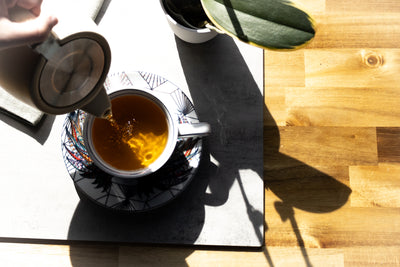The History of Afternoon Tea Time
England has always been associated with tea, but did you know prior to the introduction of tea it was actually the largest coffee consuming nation? America started out as a nation of tea drinkers, while Englishmen drank mostly coffee. America boycotted tea for coffee, so England then became the world's largest tea consumer. Tea drinking had been the height of sophistication in Britian in the 1660s. In 1662, the Portuguese princess, Catalina de Braganza, included a tea chest in her dowry, which is how tea became a symbol of sophistication among the British aristocracy.
1700's
At the dawn of the 17th century, the Indian subcontinent East Indies, home to spices, fabrics, and luxury goods, was seen as a land of seemingly endless potential.
The British tradition of High Tea began in the mid 1700s, taken between three and four in the afternoon. At the time, the goal was to serve food for workers to consume standing or in high chairs, hence the name "High Tea". The tradition began to transform and quickly began to be considered an important social event, appreciated by high society.
1800's
Prior to the introduction of tea into Britian, the English had main two meals: breakfast and dinner, with a small lunch. By 1840, there was an increase in urbanization and industrialization, causing dinner to be eaten later and later.
Anna Russell, the seventh Duchess of Bedford, was not happy about this, complaining of a "sinking feeling" around 4pm while waiting for dinner. She began ordering a tray of tea, bread and butter, and cake to her room around mid-afternoon, inviting friends to join. This became a way to curb the hunger from the long wait between meals.
The practice of friends gathering for tea and snacks became so popular that the Duchess continued it when she returned to London. By the late 1840s, Queen Victoria had learned of the Duchess idea and quickly fell in love with it. The Queen began hosting fancy dress tea parties before dinner time.
1900's
Tea consumption increased dramatically during the early nineteenth century. This pause for tea became a fashionable social event where upper-class and society women would change into long gowns, gloves and hats for their afternoon tea.

